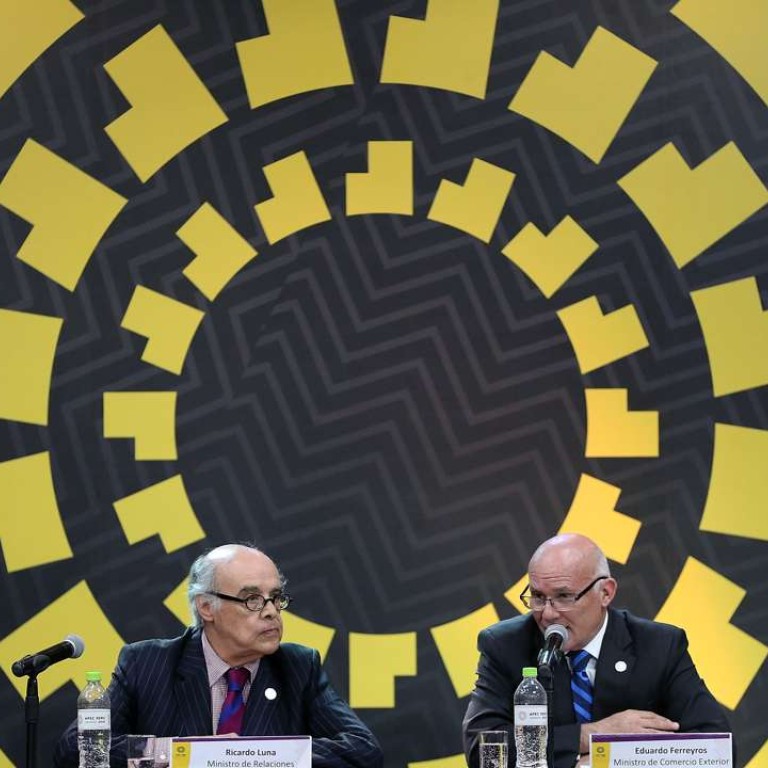
New | Threat of Trump-led protectionism hangs over Apec meeting in Lima
A US withdrawal could undermine the economic order regional leaders are trying to establish. But if America retreats, China could have a chance to move centre stage
Concerns that US protectionism will increase under the Trump administration threaten to overshadow the Apec talks in Lima, where nearly a dozen world leaders are gathered for talks on shaping regional trade
But a step inwards by the United States could give China a chance to move into the gap and possibly build momentum for its own trade frameworks.
On Friday, trade and foreign ministers from 21 nations, including the US, China and Russia, concluded their ministerial meeting by calling for a greater focus on international trade and battling protectionism and trade-distorting measures, which could “weaken trade and slow down the progress and recovery of the international economy”, they said in a joint statement.
The ministers finished a collective strategic study on the Free Trade Area of the Asia-Pacific (FTAAP), which was seen as a competitor to the US backed Trans-Pacific Partnership, a free-trade deal among Pacific Nations but which excludes China and Russia.

On the campaign trail, he vowed that if elected the US would drop out free-trade agreements including the TPP and Nafta, the deal between Mexico, the US and Canada. His threats have fuelled speculation China would use the Apec summit to push its own trade initiatives, including the FATTP and the Regional Comprehensive Economic Partnership (RCEP), which groups ten members of Association of South East Asian Nations, as well as China, Japan, South Korea, New Zealand, Australia and India, but leaves US behind.
When asked about China’s role in forming a new free-trade deal in Asia Pacific, Sun Xiao, from China’s Chamber of International Commerce, said protectionism was often driven by dissatisfaction over unequal distribution of the benefits of free trade.
We would promote the principle of joint participation and shared benefits
“If there was a bigger role for China, we would promote the principle of joint participation and shared benefits to ensure every participant would benefit from the framework. I believe such process would be supported.”
Alan Bollard, the Apec secretariat’s executive director, said the rise of protectionism could be “a reminder” to the world, though it was too early to judge what trade position the next US administration would take.
“There is a lot of talking at the meetings because people are talking about the future of globalisation and the popular feeling against globalisation,” Bollard said. “Leaders will be discussing that.”
Paulina Nazal Aranda, Chile’s deputy minister of trade, said many Apec members had long believed that trade and openness brought economic growth, but Trump’s victory has brought uncertainty to this belief.
“What I saw at the meetings in the past week is that most of the economies have been stronger in their speeches about the importance that we have to keep the spirit of Apec,” Aranda told the Sunday Morning Post on the sidelines of the Apec summit. “And the final declaration would get the issue on the table,” she said.

